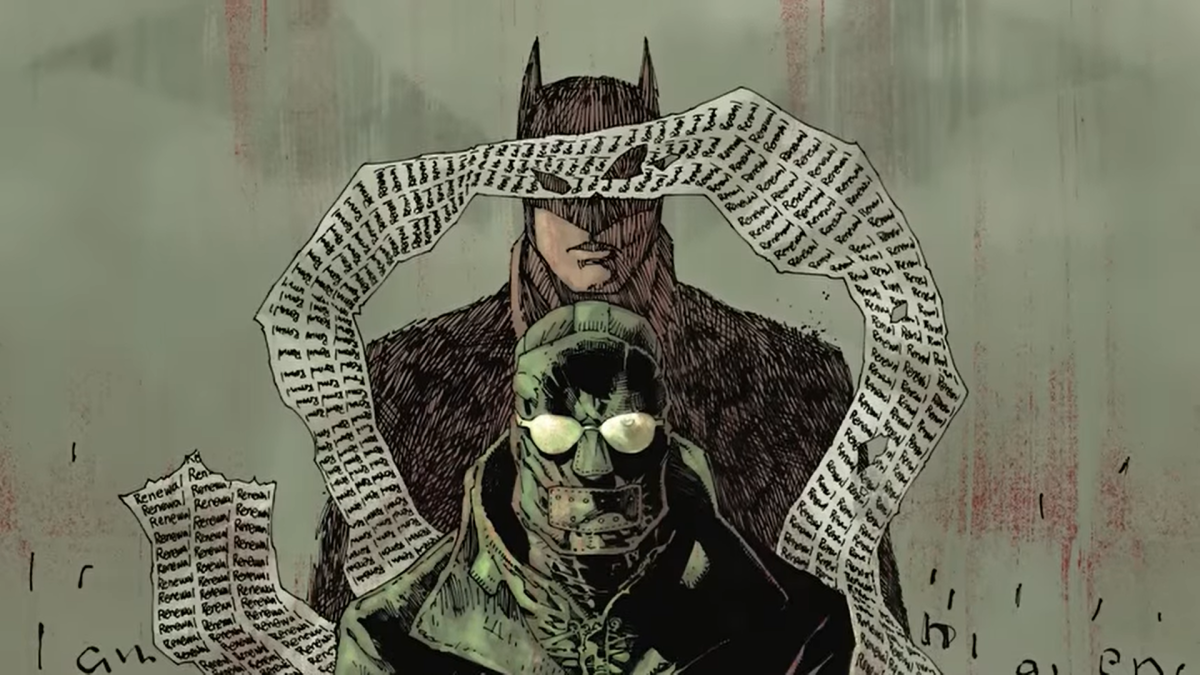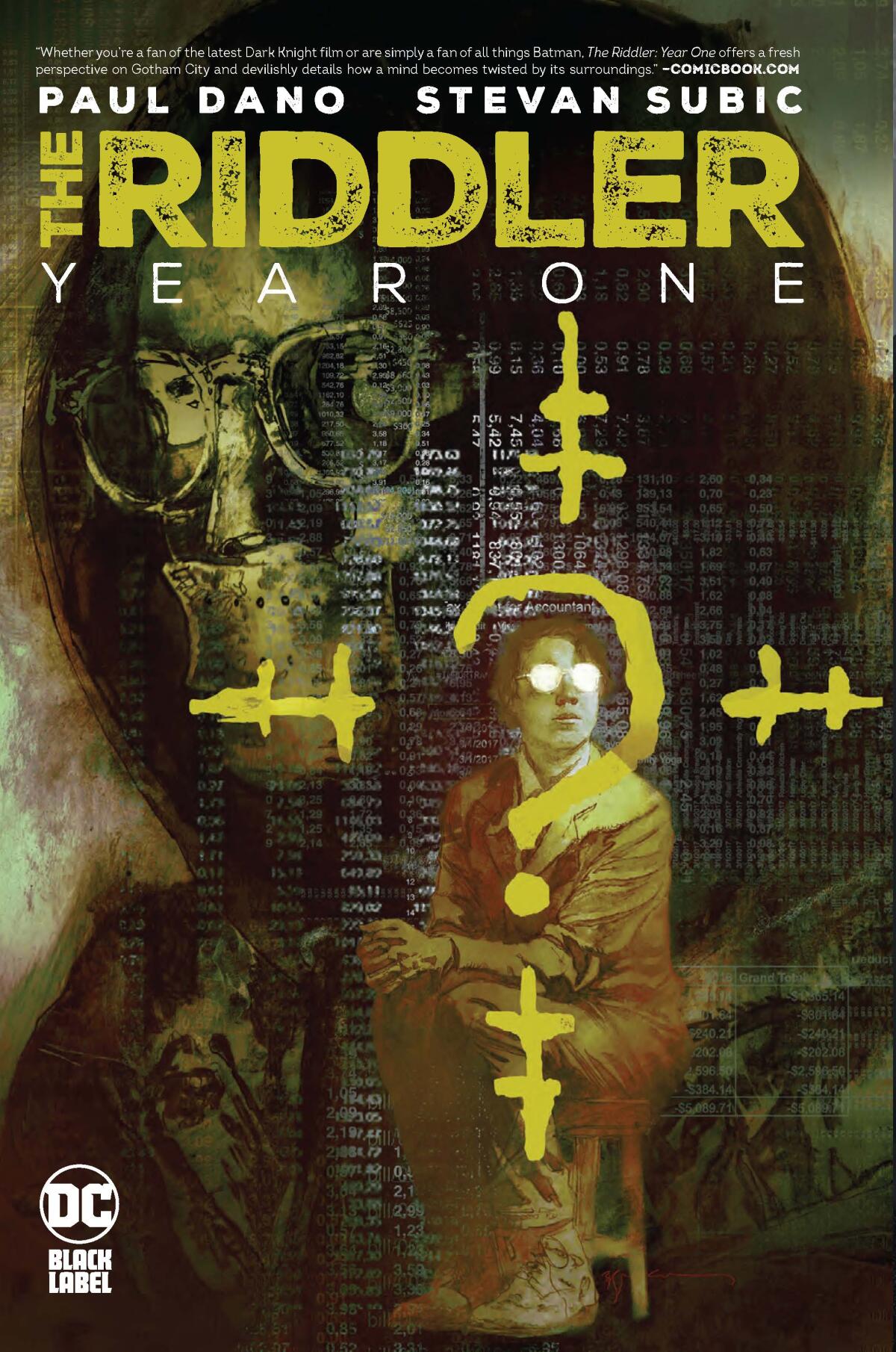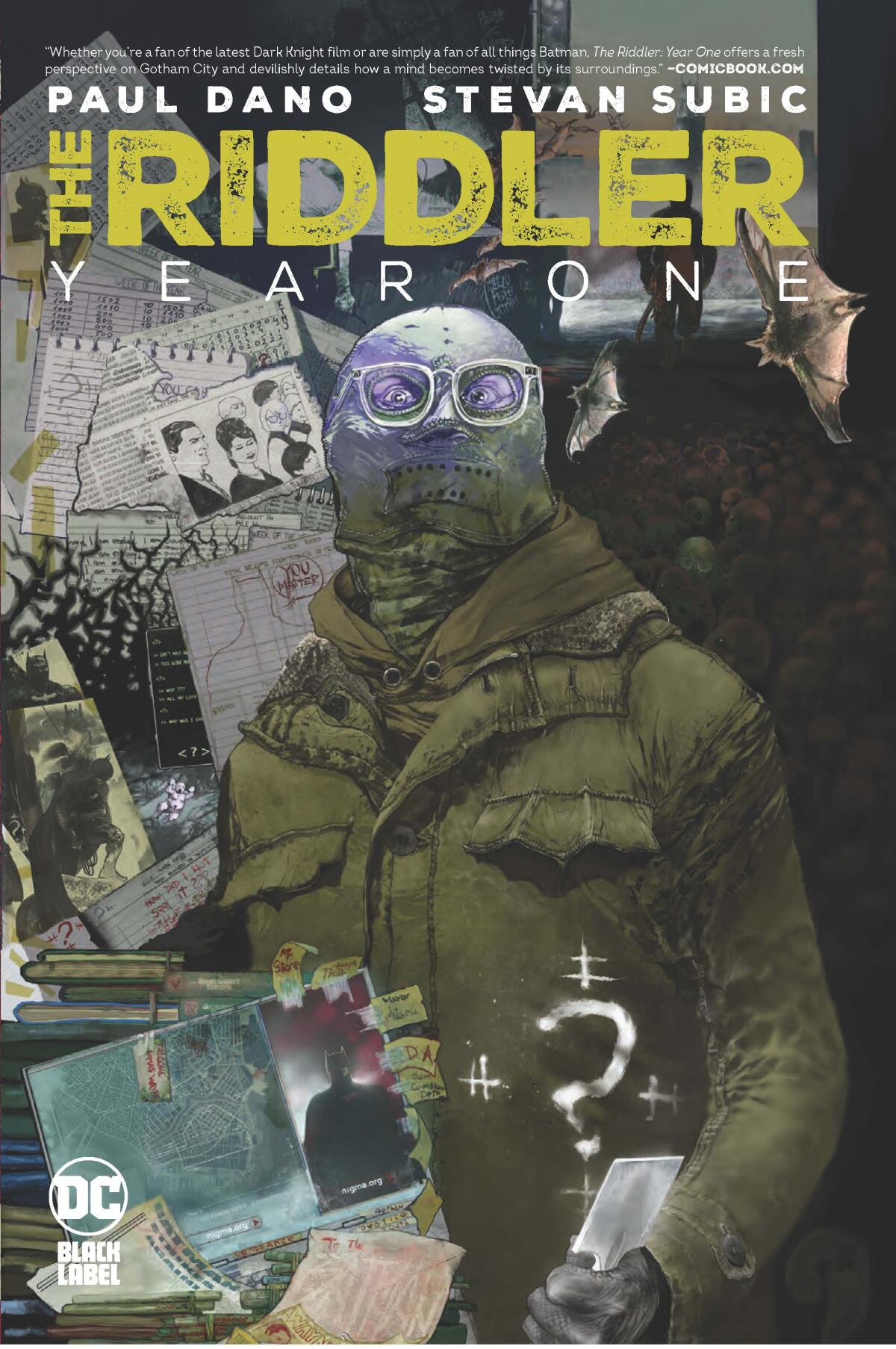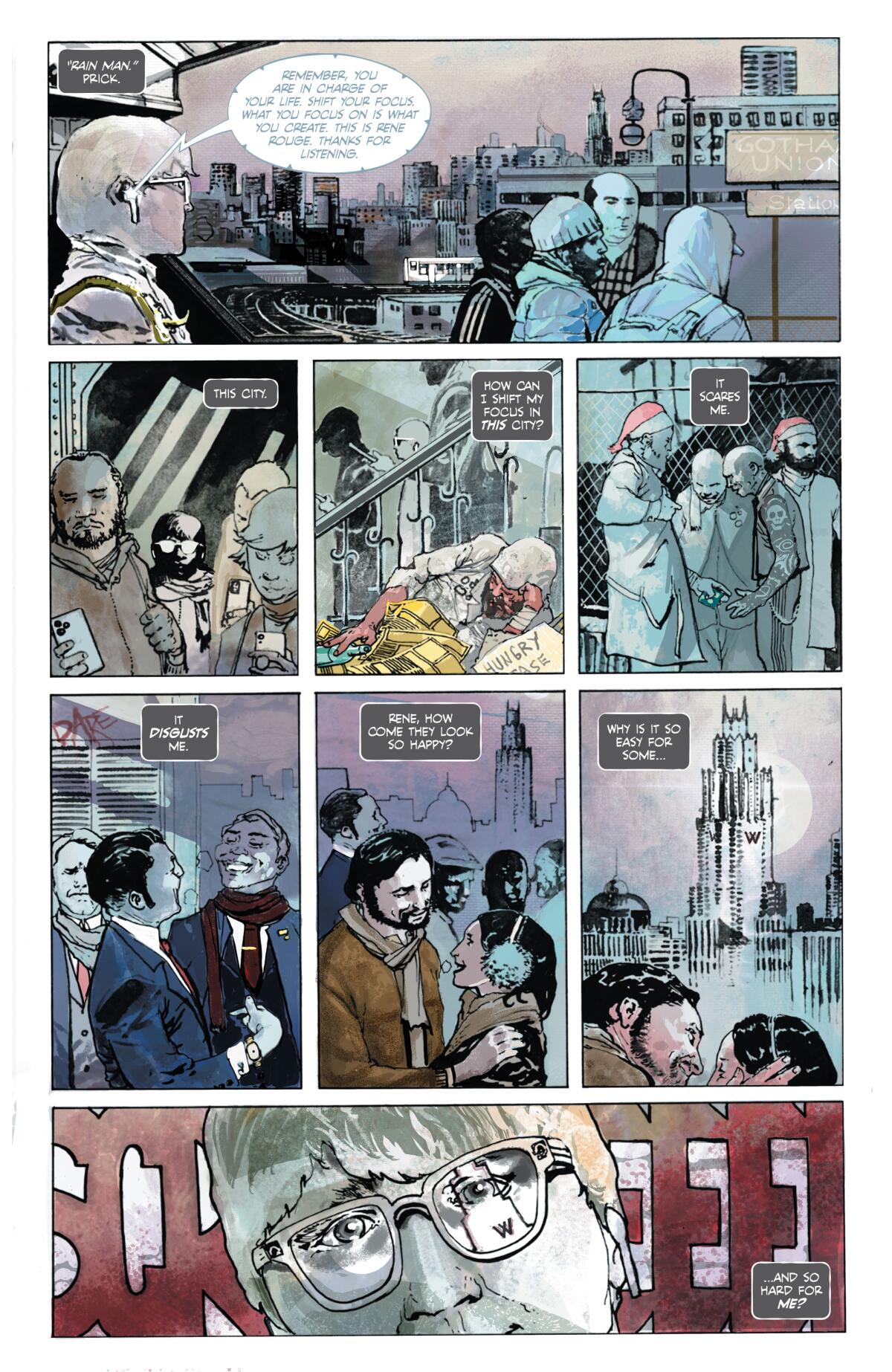Paul Dano’s ‘Riddler’ comic book tries to unravel the Batman villain: He wasn’t ‘born evil’

- Share via
To call Paul Dano a versatile artist would be an understatement. He’s been acting since childhood on stages and screens big and small, released music with the band Mook and made his directorial debut in 2018. He added comic book writer to his list of trades last year.
Dano played the Riddler in 2022’s “The Batman,” directed by Matt Reeves and starring Robert Pattinson in the title role. A member of Batman’s colorful rogues gallery, the criminal mastermind is always engaged in a deadly game with the Dark Knight, using riddles and witty wordplay to thwart him and authorities. Dano took to the role right away, exploring Edward Nashton’s background and motivations through the directives of screenwriters Reeves and Peter Craig.
Dano descended further into the mind of the Riddler by writing a limited comic book series that was released beginning October 2022 through DC Comics’ adult-oriented Black Label imprint. In “The Riddler: Year One,” the actor examined the villain’s psychology and origin story that he’d uncovered to inhabit the role onscreen.
“Once I started working on it, the story blossomed even further than I would have sort of anticipated,” he said. “But without question, a lot of my work is, ‘How do I get to page one of a script? How do I carry this person’s history with me in my body and in my voice and in my mind?’ Yes, I try to create a life for myself. And that’s indeed what this is.”
We spoke to Dano about his foray into comic books as the compilation of his six-part series is released Tuesday. It wasn’t his first time delving into comics, though.

What’s your connection to comic books?
I gave a shout-out in the introduction of the book to my grandma. When she came to town, I would take her to our comic book shop, which was in Norwalk, Conn., and I would buy comics and X-Men cards. But in truth, it was not a hobby that took me into my college years or anything. I sort of went through that phase young. I still have a couple of boxes in my parents’ house, in fact, but it didn’t color my whole personality through adolescence. So it was so fun to come back to reading comics. And it sort of opened a door in me again and literally felt like I could see the young part of me coming out.
We know about your role in “The Batman,” but what drew you to the Riddler as the topic of a comic book?
I just always saw this as a comic. And I think it’s because of the inner monologue aspect of what a person like that’s mind is like. There was something inherently sort of Dostoevskian about the inner ramblings of somebody who’s highly intelligent but has had a really hard time with obsessive thinking, and I guess, in a way, mental illness. So to get inside of that, it felt like a prose space. Again, Dostoevsky and Thomas Bernhard were two writers that I really thought about in their stuff where they sort of have this psychological rant feeling. It just felt like that sort of archetypal energy of the images in comics has always been really appealing to me. And this was just the form and the place to do it.

Comic and Batman readers have known about the Riddler for a while, but this series was a case study of a man who seemed like he was trying to not be a villain and hold back what was gnawing at him. I’m not sure if we’ve seen this in terms of the Riddler.
And I’m glad you said it felt like he was holding it at bay because my feeling was that he actually was trying, to a certain degree. I don’t think this was somebody who was just born evil. I think they tried to a certain point, and then the dam broke. So I’ve always sort of felt like a psychic break happened or something. So I would say a part of this was what brings us to that psychic break and then, what sort of unfolds after that psychic break?
And is that sort of your view of comic book villains?
OK, I have no comments on any other villain! And I mean that because I just know this one. And this was just my interpretation of, my impression of and my take on this character. There’s other wonderful Riddler comics. This is what I sort of worked with inside of myself and then expanded, and I felt like it was a stronger choice for there to be a sense of tragedy in this person’s life. The question of nature and nurture is unanswerable, but it was something that I had to wrestle with going, “What part of this was nature?” Because I think that is a part of this Gotham, which is so corrupt and has such a broken system, and this person wasn’t given a chance. Then again, a lot of people aren’t given their fair chance and they don’t go out and do what this person does.
Gotham was such a character, as it often is in Batman books, but it was especially alive in your take.
Absolutely. I don’t know many Batman comics that don’t have Gotham as a character. There’s a shared identity and then there’s a singular one per story and per artist. But it definitely felt to me like somebody small up against something big. And the city is sort of the metaphor for that and the image for that. And I think it’s also really about systemic corruption as well. And that goes from small to big.

Getting to express all of this in comic book form, and with an artist like Stevan Subic, must have been different.
Stevan was incredible. It’s his first comic here in the U.S. I’m so happy and lucky we found him. This is the first and who knows if it’s going to be the only time I ever get to do this. So I wanted to be involved. I didn’t want it to just be, “Let me write something and just pass it off and see what they do.” I thought, “Well, this is my one chance to learn and to have this creative experience.” We’d Zoom a few times a week and we’d just go through what I had written and talk about what’s the language of this comic, how is the story told in the panels, in the cut with the camera, and trying to use words that I relate to along with his own lexicon from drawing comics. I would say the first issue, we worked together on a lot, and it was great, and we kind of discovered what this was. And I think I wanted something that at least started fairly classical in terms of how the storytelling is in the panels and sort of almost Hitchcockian in precision and intention.
The compilation allows readers to binge the series as it was meant to be: one six-chapter kind of book.
Yeah. But then it was awesome to make it into [single-issue] comics. I just think it’s the coolest thing ever. But I think structurally, I’m excited for people to read it this way because, especially when it changes time or breaks the form a little bit, I think to have an emotional flow as you’re reading it is going to be a nice thing. But I’m really happy to have it in both forms on my bookshelf now.
More to Read
The biggest entertainment stories
Get our big stories about Hollywood, film, television, music, arts, culture and more right in your inbox as soon as they publish.
You may occasionally receive promotional content from the Los Angeles Times.











